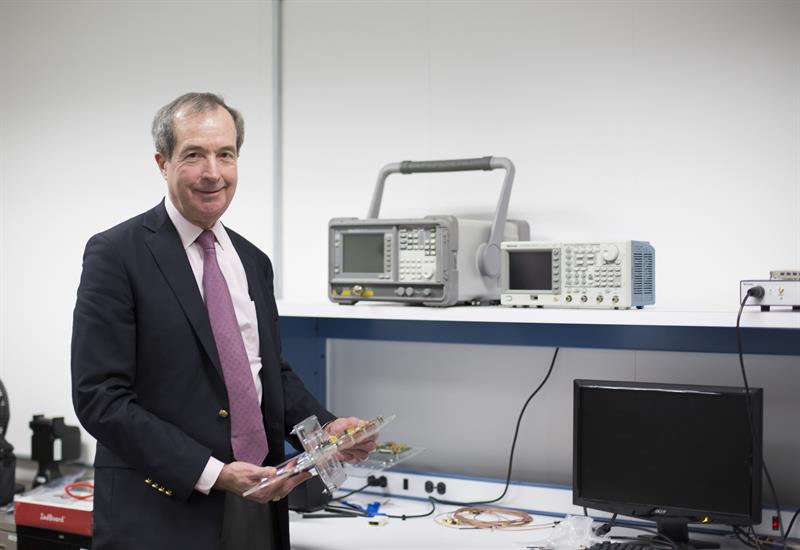The wireless communications sector – like many others - can often sound like a hype machine. The lure of something smarter, quicker and apparently better, has long driven it.
So, it should come as no surprise that the next generation of mobile – not 5G but 6G - is now gathering momentum, even as most of the big equipment makers and operators are frantically trying to meet expectations for a fast roll-out of 5G networks.
Is it too early to talk about ‘6G’? One prominent global communications equipment supplier thinks so, having declined to contribute to this article. Others were less reticent to outline their (at least initial) views of how to get to 6G and what it will – could - mean for consumers.
One theme is obvious – a huge amount of research needs to be undertaken - and not just in the electronics domain. There is a growing consensus that some of the biggest challenges relate to the Terahertz (THz) frequencies that will be the cornerstone of 6G communications.
The whole area got a boost earlier this year when the FCC, the US regulator, gave the go-ahead for testing in 21.2 GHz of spectrum between the 95GHz and 3THz range.
The new regulations and licences will give innovators the flexibility to experiment that, according to experts in the field, will bear fruit in about 12-14 years’ time.
While deploying THz signals involves serious challenges, it also offers the potential for hugely exciting applications, such as sensing and the ability to “see” around corners and support data rates high enough to provide the real-time computations needed for wireless remoting of human cognition. In short true artificial intelligence.
Perhaps more relatable applications will include transmission at data rates suitable for super highspeed wireless back-haul, and even faster communications within and between data centres. There are also hopes the short wavelengths at mmWave and THz will allow massive spatial multiplexing and incredibly accurate imaging as well as sensing.
One specific issue at THz rates that is also wavelength related concerns antennas and electronics. The potential stumbling block is that sensors need to be so small that their electronics become a limiting factor, in terms of size and power consumption leading to complexities in integration.
And while the conventional wisdom holds that as you go higher up in frequency, you suffer bigger losses, researchers at NYU Wireless note this is only true if you use an omnidirectional antenna, as is the norm today. With directional antennas, they suggest it is possible to do better as you go higher in frequency for a given power level and a given antenna physical size.
Huge challenges
“There are huge challenges ahead to achieve the ten-times improvements that will be needed to achieve what the industry is currently defining as 6G”, Professor Tom Marzetta, the director of NYU Wireless, one of the foremost centres globally for research into communications technologies told New Electronics.

Marzetta is renowned for originating the concept of Massive MIMO during his 22-year tenure at Nokia Bell Labs. Recently appointed, he takes over from the founder of NYU Wireless within the University’s Tandon School, Professor Theodore (Ted) Rappaport.
Rappaport led the group’s pioneering use and understanding of Millimetre Wave frequencies that along with Massive MIMO has become the cornerstone of 5G. Interestingly, the two inventors have somewhat divergent views on the emerging technologies that will drive 6G. It seems Rappaport is committed to exploiting the potentials of the higher frequency regions of the EM spectrum, in part because they are so vast and underutilised.
Meanwhile Marzetta seems more concerned with better utilisation of the sub-6GHz bands.
Marzetta says one immediate focus of his work will be a “whole series of interconnected concepts and principles of operation that might result in wireless systems that work at previously unimaginable levels.
“I call this concept ‘Beyond Massive MIMO’. The research seeks to benefit from a closer fusion of electromagnetic theory and communications theory.”
He readily acknowledges such ideas are still at an early stage. “They are mainly theoretical, not even in the lab yet, and serious mathematical computing over the next three years will prove whether they will work or not. But then this is the way the concept of Massive MIMO became today’s reality. I conceived that concept in 2008. We are 10 years in, and that rate of pick up and deployment seems typical of the industry.”
Looking more generally at the future of wireless communications, Marzetta notes that some of the current, simplified models will just not work for much longer.
“We need more physics, new thinking. All the current wireless technologies and many of those under development are actually grounded in notions developed in the 19th century and suffer from perceived limitations that nature appears to impose on wireless communications.”
He laments that there seems to be insufficient focus on fundamental research into wireless technologies. And while 6G is “a really interesting and exciting area, so you might think the fundamental science would be covered. Unfortunately, this is not the case.”
A significant percentage of the funding for NYU Wireless’ work comes through the Industrial Affiliate Programme that Marzetta is keen to expand and which already includes the likes of Ericsson, Nokia, AT&T, Qualcomm, National Instruments, Keysight Technologies and InterDigital.
Projects in the pipeline at NYU Wireless and at other research centres focusing on 6G include new technologies such as beamforming and novel antenna approaches that could help mitigate the spectrum propagation problems that dog transmission in very high spectrum bands.
Elsewhere, and perhaps not surprisingly, Finland late last year established an eight-year project with a budget of Euros 251 million, to research 6G technologies and applications. Funding will come partly from the Finnish government, and equal amounts from public and private sector partners, with participation from some of the key equipment suppliers in the mobile communications sector.
Much of the initial work will be done at the University of Oulu. The University organised the first 6G Summit earlier this year, a three-day event in collaboration with the IEEE that was by invitation only and included researchers, regulators, operators and senior representatives from all the major, global equipment makers.
“We had over 270 participants and have now prepared an in-depth and first White Paper on 6G that attempts to define the initial ideas and realistic targets for the technology”, Professor Ari Pouttu, vice director of the 6G Flagship programme told New Electronics.
That White Paper includes roadmaps, use cases, spectrum allocation requirements, hardware demands and much more that will be needed for ‘ubiquitous wireless intelligence’ for 2030 and beyond, says Pouttu and “opens the door for defining the 2030 wireless era.”
“In our Flagship project, we will focus on four key and fundamental research areas: wireless connectivity; distributed computing; services and applications; and, importantly, devices and circuits.”
Putting some flesh on these underlying technology trends and bullet points, Pouttu notes the first refers to the evolution of the disruptive radio access that is inherent in 5G core networks. He suggests the industry will need to start thinking about completely new ways of providing overthe-air communications. “For this we will need new kinds of waveforms to transmit data – OFDM will not suffice.”
Distributed computing refers to moving the computing power to the edge of the network, enabling novel machine learning capabilities as well as giving the network Artificial Intelligence.

6G applications
As to applications and services, Pouttu noted that a recent paper prepared by researchers at Oulu, in collaboration with engineers at Virginia Tech in the US and the Beijing Institute of Posts and Telecommunications, outlined some of the applications likely to drive 6G. The list includes multisensory AR/ VR/MR (M for ‘mixed’) applications, connected robotics, and autonomous systems, wireless brain-computer interactions (BCI) and blockchain technologies.
They suggest future multisensory and BCI applications will be mainly deployed on smart wearables, integrated handsets and perhaps even body implants and such advances are likely to render smartphones as we know them now obsolete.
“At some point smartphones will be replaced by devices such as glasses with gesture control.”
Other researchers have also suggested that 6G capabilities will include connectivity to surfaces - rather than devices - and support a whole variety of sensory applications.
The 6G Genesis team also consider the dynamic management of the data-rate latency /reliability trade-off based on use-cases and applications needs to be a key area of work and is considered a serious challenge.
Semiconductor advances
Pouttu acknowledges that one of the biggest challenges to make 6G a reality in the timeframes suggested will depend on advances in semiconductor technologies.
“We will need new thinking here. The circuits will be significantly different from today’s standard CMOS silicon based ICs. These will just not work for transmissions above 95GHz. New materials may be needed – perhaps graphene, InP, SiGe or maybe even plastics?”
In fact, groups around the world are already working on potential solutions. For instance, researchers at the University of California, Irvine have demonstrated a wireless transceiver chip capable of sending signals at frequencies above 100GHz, and claim lower consumption than existing devices.
The single-channel 115-135GHz prototype is made on a 55nm SiGe BiCMOS process and exhibits data rates of 3Gbit/s across a gap of 30cm. Similar devices have been described by researchers at the University of Wuppertal, Germany.
Looking at the bigger picture, there are several other 6G initiatives already out of the blocks, including one from China’s Mobile Research Institute. And the ITU has formed a Focus Group – dubbed Networks 2030 - looking at the backbone technologies that will be needed “beyond 5G”.
In the US, the Semiconductor Research Corporation has formed the ‘Centre for Converged Terahertz Communications and Sensing’ (ConSenTer), a group of universities and research institutes looking to develop technologies using hubs with massive spatial multiplexing.
And of course, some of the biggest infrastructure equipment players have entered the fold, including Samsung and Huawei, the latter with researchers at labs in both Ottawa, Canada and in its home territory.
Huawei senior executives have already started to boast that they are already ahead in the field, though with little concrete evidence that this is the case. Inevitably, alliances are being hatched. The University of Oulu has signed an MoU to collaborate with South Korea’s leading research Institute ETRI on 6G technology, as well as 5G network variants. The deal shows foresight as South Korea is the most advanced in rolling out 5G networks.
Company agreements
The same goes for companies. Earlier this year, South Korea’s leading carrier SK Telecom said it had signed separate agreements with Samsung, Ericsson and Nokia on further 5G and novel 6G developments.
Details of the exact nature of the work between the companies are scarce, but they agree the target is to draft technical requirements and business models for “beyond 5G”. All that will feed into the forthcoming standardisation efforts for 6G.
According to Magnus Frodigh, head of research at Ericsson, 5G is likely to have an unusually long lifespan, perhaps longer than the traditional ten years for each generation.
“What is clear is that we will need an architecture with even more robustness, significantly better latency and improved security than in the 5G era that is just taking off.”
He added that machine learning and artificial intelligence will need to be at the core of such a network, and that it needs to be aligned to communications between machines as much as humans.
But he stresses the focus for a company like Ericsson is very much getting 5G right and if the industry achieves that over the next decade or more, there will be less pressure to move to the next generation. And he suggests that many of the ideas, potential applications and technologies that are now being discussed as ‘6G’ will be included in advanced iterations of 5G.













